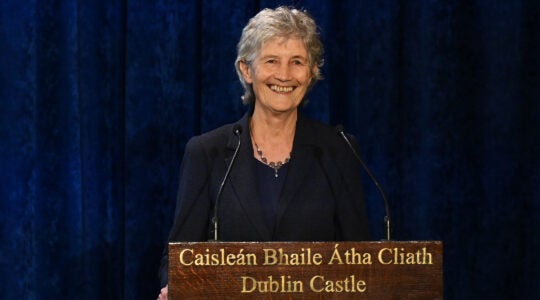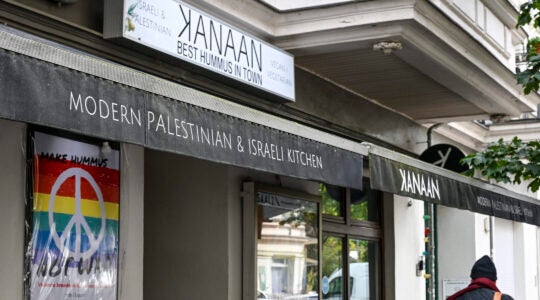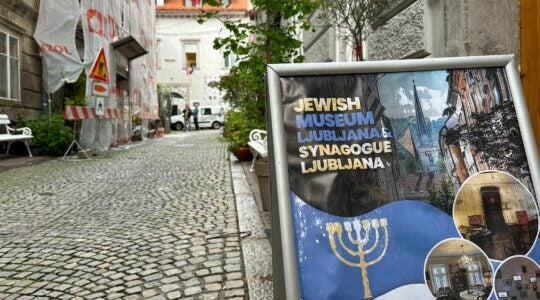(JTA) – Venice has kicked off commemorations marking the 500th anniversary of the imposition of the world’s first official Jewish ghetto.
Artists, scholars, musicians and actors, as well as Jewish Supreme Court Justice Ruth Bader Ginsburg, will take part in an array of events lasting through the year.
The gala opening ceremony for anniversary events took place on Tuesday night, 500 years to the day that the Venetian Senate, under the Doge, or chief magistrate, Leonardo Loredan, ordered the 700 or so Jews in the city to be enclosed in a cramped area that had once been the site of a foundry – “geto” in the Venetian dialect.
The ceremony at the historic La Fenice theater included a performance of Gustav Mahler’s “Symphony No. 1 in D major” conducted by the Israeli-born Omer Meir Wellber, as well as an address by historian Simon Schama.
“I want to forcefully reaffirm that the Jews have no nostalgia for the Ghetto, whose institution must be remembered and studied – but not celebrated,” Renzo Gattegna, the president of the Union of Italian Jewish Communities, told the invitation-only crowd. “The institution of the Venice ghetto, and of all the others that were created later, remains inextricably linked to periods of harassment and segregation, denial of the most basic civil and political rights, and age-old contempt, taught and practiced against civil, peaceful and defenseless Jewish communities.”
Highlights of the commemoration events will be “Venice, the Jews and Europe,” a major exhibition at the Doge’s Palace to run from June 19 to Nov. 13. At the end of July, an open-air performance of Shakespeare’s “The Merchant of Venice” will take place in the ghetto’s main piazza – the first time it will be performed on the site where the action in the play takes place. During the production, Ginsburg will preside over a mock trial of Shylock, Shakespeare’s villainous Jewish moneylender.
Another major project seeks to raise 8.5 million euro, nearly $10 million, for the modernization of the Venice Jewish Museum and restoration of the ghetto’s 16th-century synagogues.
Jews remained segregated in the Venetian Ghetto until it was abolished by Napoleon in 1797. At the height of the ghetto period, as many as 5,000 Jews lived there in houses that were built of many floors to conserve space. Despite the strictures, the Jews of the ghetto worked at trades and lived richly creative lives. Venice was a major center of Hebrew publishing, and Jewish congregations built five extraordinarily ornate synagogues that exist today, two of which continue to be used for services.
Only about 400 Jews live in Venice today, however, with only a handful of them living in what was the ghetto. The community runs a school, an old-age home and other social and educational activities. Community leaders hope the attention that anniversary events will focus on Venetian Jewish history and culture will have a positive impact on the future of Jewish Venice.
“The 500th anniversary of the ghetto can be the occasion to affirm that such a place cannot be a sterile icon but must represent an example of Jewish life and culture,” said Venice Rabbi Scialom Bahbout, who hopes to create an international center of Jewish learning in the ghetto.
“There’s no question that we are more interested in the future than in the past,” said university professor Shaul Bassi, the coordinator of the committee for the 500th Anniversary, who traces his ancestry in Venice back to the 16th century.
JTA has documented Jewish history in real-time for over a century. Keep our journalism strong by joining us in supporting independent, award-winning reporting.





